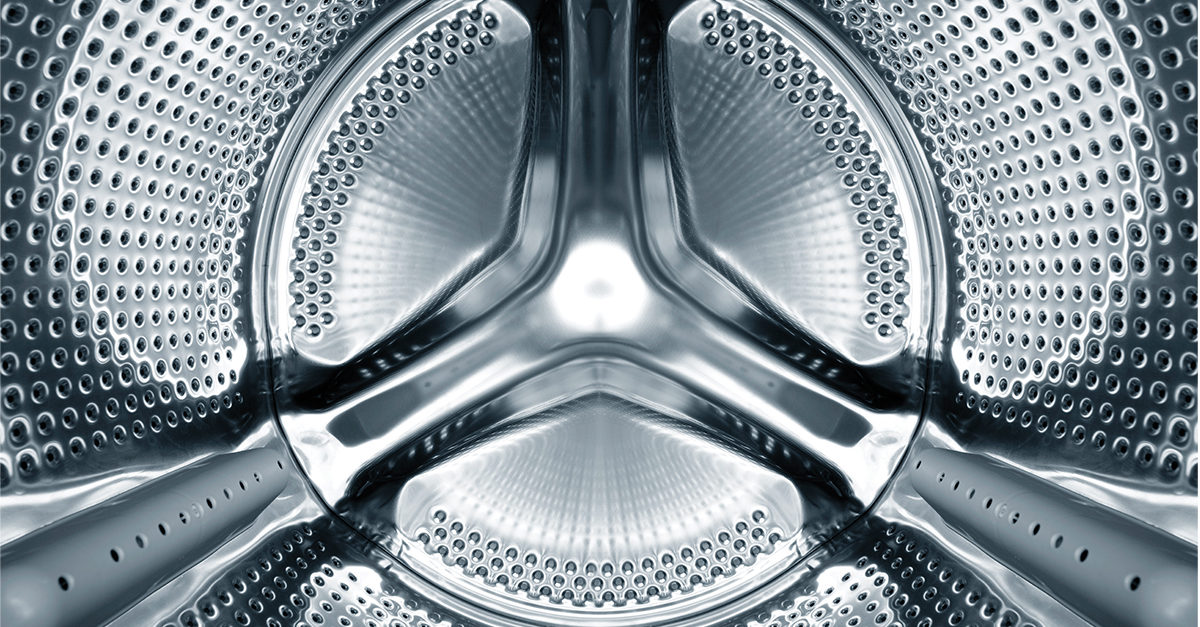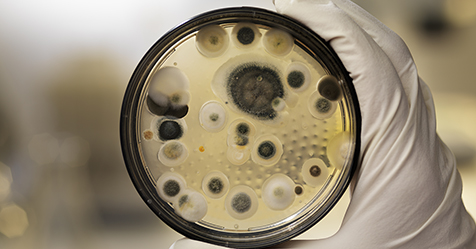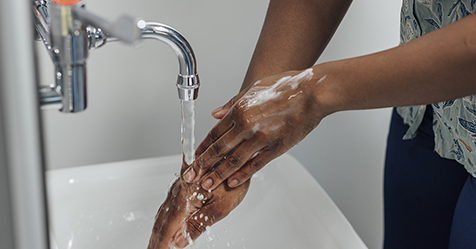Advocates of sustainability may suggest cold-water laundering for the cleaning of professional cleaning cloths, towels, linen, uniforms, and other textiles that are used in health care and other types of facilities. But while using cold water instead of hot may help to minimize a facility’s carbon footprint and even save on costs, this environmental effort still raises questions.
According to a report from the U.S. Centers for Disease Control and Prevention (CDC), “Several studies have demonstrated that lower water temperatures of 71 degrees Fahrenheit to 77 degrees Fahrenheit (22 degrees Celsius to 25 degrees Celsius) can reduce microbial contamination when the cycling of the washer, the wash detergent, and the amount of laundry additive are carefully monitored and controlled.”
However, the report also says the following: “Low-temperature laundry cycles rely heavily on the presence of chlorine- or oxygen-activated bleach to reduce the levels of microbial contamination. The selection of hot- or cold-water laundry cycles may be dictated by the state health care facility licensing standards or other regulation.”
Cold-water laundering offers benefits, but there also may be some drawbacks or special considerations when using the practice for your facility. Dr. Charles Gerba, microbiologist and professor at the University of Arizona, addresses the pros and cons of cold-water laundering by answering some questions below.
Q: Do microbes survive cold-water laundering, and if so, how can this be prevented?
A: In studying laundry issues, we consistently find you get more survival of fecal bacteria in cold [water washing than] hot water washing. Hot water is very important in killing off these organisms.
Q: Does cold-water washing create cross-contamination?
A: Yes, cross-contamination between fabrics occurs as you get movement of live bacteria from one fabric to another when washing in cold water.
Q: What wash temperature is ideal?
A: The CDC recommends laundering hospital scrubs at about 160 degrees Fahrenheit (71 degrees Celsius) to prevent the survival and transmission of pathogens, but this temperature may not be achievable in many settings. Detergents work better in hot water (130-140 degrees Fahrenheit). Chemical reactions necessary for cleaning occur more readily in hot water, as the heat assists in killing germs. Bleach is also more effective at a higher temperature.
[An article I co-authored for The American Journal of Infection Control also recommends the following]: “Washing at 60 degrees Celsius [140 Fahrenheit] or above using any laundry product or washing at 40 degrees Celsius [104 Fahrenheit] using a bleach-containing laundry product should be sufficient to kill most microorganisms, including Clostridium difficile (C. diff) spores. Bleach should be used when possible, and always on grossly contaminated garments. All hospital attire should be dried completely in a dryer, and then stored in a manner to ensure continued cleanliness and minimize fungal growth.”
Q: What if my facility does not clean with bleach?
A: If you do not want to use chlorine bleach, activated oxygen-based detergents can be effective in cooler water.
Q: What effect does wash cycle duration have on removal of germs?
A: Longer wash cycles should be more effective than shorter cycles.
Q: Are there drying factors that help with cross-contamination?
A: Hot drying helps. If you do a 30-minute dry [cycle], you still have quite a few organisms surviving, especially bacteria; but 45 minutes is better, so longer drying periods help.
Q: What effect does the type and thickness of textile have on germ survival rate?
A: It is harder for detergents and hot water to penetrate thicker materials. Research shows the thickness of the textile material matters during washing, as it is harder to kill bacteria in a thick cleaning cloth, such as a bath towel, as opposed to a thinner textile. Thinner cloths should enable better cleaning and sanitizing in cold water. Microfiber is excellent as a cleaning tool, but because it picks up and holds such a high concentration of microbes (perhaps 100 times as much as cotton cloths), it is also more challenging to launder properly. Textiles that are more efficient at cleaning must be cleaned more thoroughly.
Q: Do you have any other thoughts to share on cold-water laundering?
A: It would be interesting to study washing textiles in electrolyzed cold water. Exposing pathogens to silver ions and copper elements in fabrics or washing systems may help when laundering in cold water.



